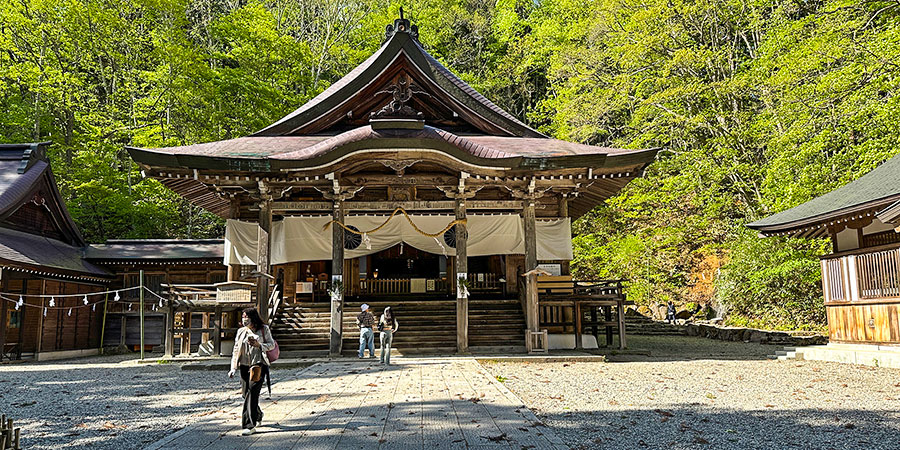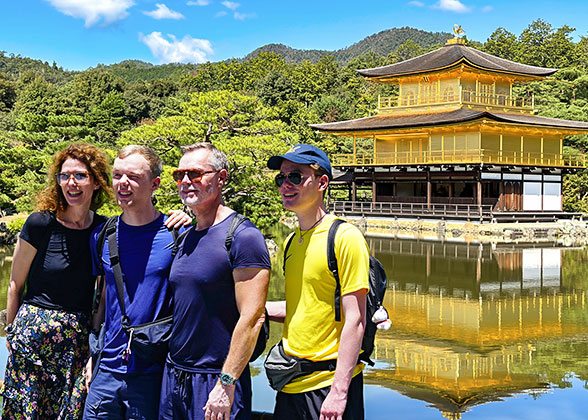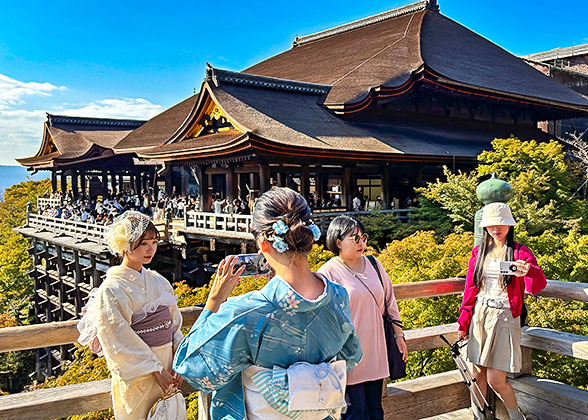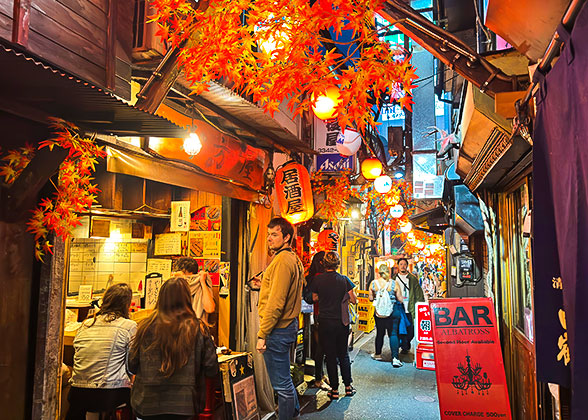Togakushi Shrine
Togakushi Shrine, located at the foot of Mountain Togakushi, Nagano, Japan, is an ancient shrine cluster over 2,000 years old. It consists of five shrines, including Houkosha, Hinomikosha, Chusha, Kuzuryusha, and Okusha, each at a certain distance from the other. According to widespread Japanese mythology, they were built to honor deities who brought light back to the world.

Togakushi Shrine ( 12
|
Ama-no-Iwato Mythology of Mountain Togakushi
The legend goes that the Sun Goddess, Amaterasu, once hid in the Ama-no-Iwato cave to avoid her annoying brother, the god of storms, leaving the world in darkness. The other gods tried to get Amaterasu out of the cave to bring the light back. At the suggestion of Omoikane, the god of wisdom, the other gods hold celebrations outside the cave. The dance of the goddess Ame-no-Uzume lured Amaterasu to peek through a crack, and then Ame-no-Tajikarao, the god of hand power, took the opportunity to break the rock and pulled Amaterasu out. It is believed that the rock broken apart by Ame-no-Tajikarao is the present Mountain TogakushiFive Shrines of Togakushi Shrine
1. Okusha
As the main shrine of Togakushi Shrine, Okusha enshrines Ame-no-Tajikarao, who successfully broke the rock where the Sun Goddess hid. He represents good luck, dreams coming true, grain harvest, sports victory, and others, and he attracts many believers from all over Japan to pray yearly.Highlights: Zuishinmon Gate; Cedar Promenade has more than 200 tall cedars, many more than 400 years old.
2. Chusha
Here enshrines Omoikane, the god of wisdom, whose strategy brought out the Sun Goddess. The god of wisdom blesses people with good fortune and success in their studies and business.Highlights: A dragon ceiling painting by Kawanabe Kyōsai, a famous Japanese painter; a Japanese cedar over 800 years old.
3. Hinomikosha
Hinomikosga was built in 1098, the second year of Japanese era Jōtoku, to enshrine Ame-no-Uzume-no-Mikoto, the goddess who once danced to attract the attention of the Sun Goddess. She is worshipped as the god of artistic skills and matchmaking.Highlights: Two trees over 500 years old and sharing one root like a couple hugging each other; Saigyō-zakura, a cherry blossom tree related to a famous Japanese poet, Saigyō Hōshi.
|
|
|
4. Houkosha
The goddess enshrined here is the daughter of Omoikane, the god of wisdom, enshrined in Chusha. She is revered as the god of learning, sewing, and handicrafts. Beyond this, in the old times, Houkosha was the furthest site where women were allowed on the Mountain Togakushi, so it became a praying place for female believers. It is believed the gods here bless women and children and protect women with safe childbirth.
Highlight: exquisite embossment of Kylin, an auspicious animal in Chinese and Japanese culture.
5. Kuzuryusha
Kuzuryūshin, the nine-headed dragon god, has been the deity of Togakushi since ancient times and was enshrined much earlier than Ame-no-Tajikarao. He is not only the god of water, god of rain, god of decayed teeth, and god of matchmaking but is also highly worshipped as the deity who helps to realize wishes.
Togakushi Shrine in Nagano
Two Visit Ways: By Walk or Tour Bus
Walking Route: 9.8 kilometers (6 miles); 3 hours

Path to Togakushi Shrine
|
 Tip: Warning signs of bears can be seen along the way to each shrine. For your safety, we advise you not to go into the deep forest, and carry bear bells like Japanese visitors.
Tip: Warning signs of bears can be seen along the way to each shrine. For your safety, we advise you not to go into the deep forest, and carry bear bells like Japanese visitors.
Tour Bus Route
The tour bus will stop at Houkosha, Chusha, and Okusha, while you still need to walk for about 40 minutes from Okusha tour bus station to the main hall. You can combine walking and bus tours if you have limited time or physical energy. But the bus departs at an interval of an hour, so we advise you to arrange your visit in advance and pay attention to the final departure. Tip: The bus will not stop at the entrance of Okusha in winter.
Tip: The bus will not stop at the entrance of Okusha in winter.Things Worth Doing in Togakushi Shrine
Collect Togakushi Shrine Shuin
Visitors can get all five Shuins, seal stamps given by Shinto shrines in Japan, at Houkosha, Chusha, and Okusha. The collection books called shuinchō are also sold there.Taste Togakushi Soba
Togakushi Soba, a kind of Japanese noodle made of buckwheat flour, is one of the three major Soba in Japan. Eating Soba with salt is a unique way of eating only in Togakushi. Tip: Many restaurants around the five shrines close every Tuesday, while on other days, they usually stay open till 4:00 pm.
Tip: Many restaurants around the five shrines close every Tuesday, while on other days, they usually stay open till 4:00 pm.Pray in Houkosha, Chusha, Kuzuryusha and Okusha

Pray in Togakushi Shrine
|
Reception Time: 9:00 am to 4:30 pm; Okush: 10:30 am to 3:30 pm
Charge/person: At least JPY5,000 for traffic safety praying; at least JPY10,000 for sweeping away bad luck
Charge/group: At least JPY10,000
 Tip: Please make appointments in advance.
Tip: Please make appointments in advance.
Appreciate Kagura (“God-entertainment”)
Kagura in Togakushi Shrine, a type of ritual ceremonial dance, originated from the dance performed by Ame-no-Uzume-no-Mikoto in the mythology. There are about 70 performances a year on various fiestas.Duration of Whole Ceremony: About 1.5 to 2 hours
 Tip: Tourists can watch the ceremonies for free without reservation, but please do not enter or leave the hall during the performance, and do not take photos or videos.
Tip: Tourists can watch the ceremonies for free without reservation, but please do not enter or leave the hall during the performance, and do not take photos or videos.



